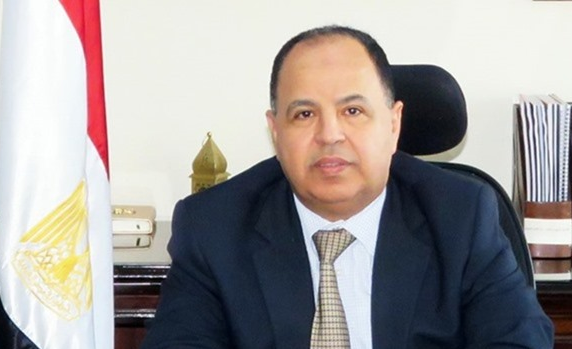ALEXANDRIA, Egypt – Finance Minister Mohamed Maait said the aim of developing the customs system is to turn Egypt into a global hub for trade.
Speaking at the inauguration ceremony of the Tahya Misr multipurpose maritime terminal in Alexandria on Thursday in the presence of President Abdel Fattah El Sisi, the minister added that the customs’ system development included introducing new legislation, automating procedures and qualifying customs staff.
Maait stated the new customs legislation introduced in 2020 match the best international standards and practices in facilitating trade movement, as they help in applying the single-window system and the advanced cargo information system and improving risk assessment.
He emphasized that an executive rule was issued to unify all procedures at ports when releasing goods.
The minister went on to say that three amendments were introduced to the tariff lines in the past four years, citing that three new laws were issued in coordination with the Ministry of Trade and Industry to make a tariff balance between raw material and finished products, which in turn contributes to boosting the national industry and increasing production and exports, through adopting flexible customs tariffs.
The minister explained that logistics centers were established to serve 47 customs points at 21 harbors, with a view to reducing the time of customs clearance.
He affirmed that some 99.9 percent of Egyptian imports and exports were covered in the National Single Window for Foreign Trade Facilitation “Nafeza”, except for the ports of Arish and Al-Awga.
The minister said his ministry works to link the public and private free zones with Nafeza.
Maait reviewed the commodities that were released from January to May 2022, saying that goods worth USD 37.7 billion were cleared in this period, compared to USD 31.8 of commodities that were released in the corresponding period of 2023.
Regarding the goods accumulated at ports, the minister said the value of those commodities hit nearly USD 4.9 billion in January 2022 and reached USD 15 billion in October 2022.
The goods currently stuck at ports amount to USD 5.5 billion, he added.
With regard to linking the Nafeza system with the electronic billing system, the minister underlined that import and export operations would not be allowed, except through the electronic invoice system to know all inputs and outputs.
Maait explained that the application of the comprehensive risk management system assisted in accelerating the process of goods clearance after being examined.
He said work is under way to upgrade the organizational structure of the Customs Authority to suit the recent electronic changes, stressing the need to train top university graduates on the new customs system.




